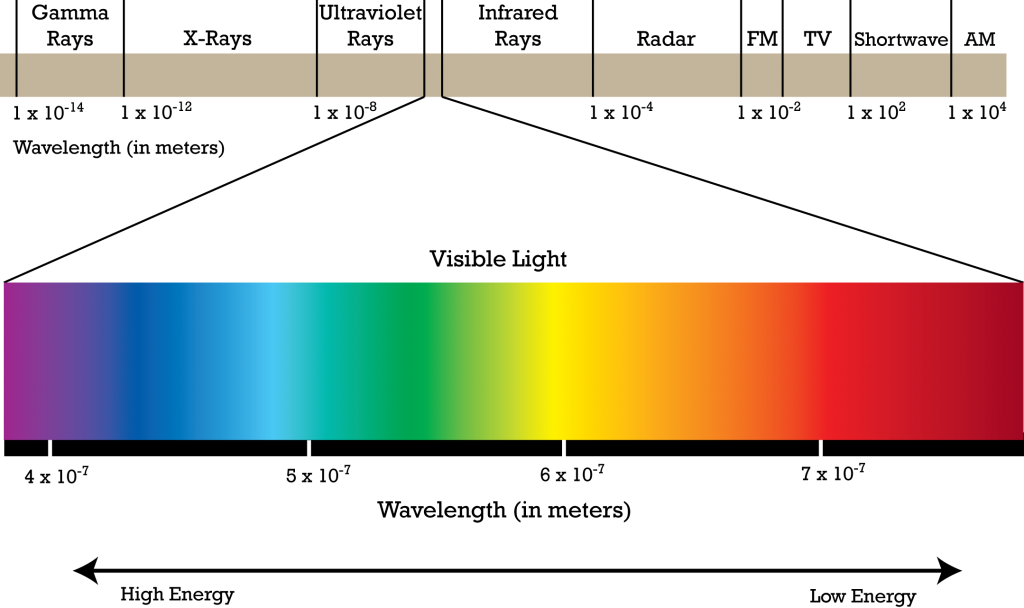Light is energy, and it can be defined by four things: intensity (how bright), frequency (or wavelength), polarization (the direction of the electric field), and phase (time shift). We’re going to look at different ways to produce light as well as its properties.
Download the student worksheet that goes with this lesson.
Visible light (think rainbows) are only a tiny part of the wide electromagnetic spectrum that we can detect with our eyes. When you change the wavelength of light, you change the color of the light. If you pass a beam white light through a prism, the prism un-mixes the colors into its rainbow of colors that make up white light.
The intensity decreases as you move further away from the sun (but it decreases at a rate proportional to the distance squared). If we placed Earth way out where Pluto is, then the amount of light energy that reaches the distant Earth would be much, much less. Astronomers use this idea when looking at the stars. Just because a star appears brighter doesn’t mean it’s more luminous. The distance to the star also comes into play when figuring out stellar brightness (which relates directly to the star’s temperature).

